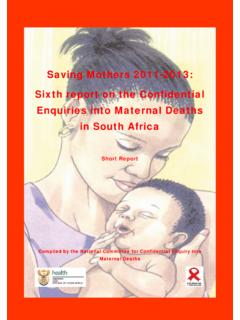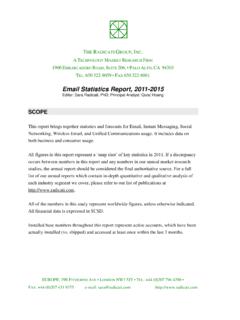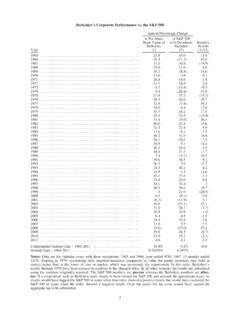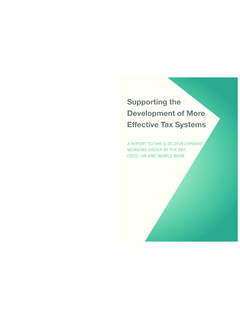Transcription of REPORT OF THE SECRETARY-GENERAL’S PANEL OF …
1 REPORT OF THE SECRETARY-GENERAL'S. PANEL OF EXPERTS ON ACCOUNTABILITY IN. SRI LANKA. 31 March 2011 . REPORT OF THE SECRETARY-GENERAL'S PANEL OF EXPERTS. ON ACCOUNTABILITY IN SRI LANKA. Executive Summary On 22 June 2010, the Secretary-General announced the appointment of a PANEL of Experts to advise him on the implementation of the joint commitment included in the statement issued by the President of Sri Lanka and the Secretary-General at the conclusion of the Secretary-General's visit to Sri Lanka on 23 March 2009. In the Joint Statement, the Secretary-General underlined the importance of an accountability process , and the Government of Sri Lanka agreed that it will take measures to address those grievances . The PANEL 's mandate is to advise the Secretary- General regarding the modalities, applicable international standards and comparative experience relevant to an accountability process, having regard to the nature and scope of alleged violations of international humanitarian and human rights law during the final stages of the armed conflict in Sri Lanka.
2 The Secretary-General appointed as members of the PANEL Marzuki Darusman (Indonesia), Chair; Steven Ratner (United States); and Yasmin Sooka (South Africa). The PANEL formally commenced its work on 16 September 2010 and was assisted throughout by a secretariat. Framework for the PANEL 's work In order to understand the accountability obligations arising from the last stages of the war, the PANEL undertook an assessment of the nature and scope of alleged violations as required by its Terms of Reference. The PANEL 's mandate however does not extend to fact- finding or investigation. The PANEL analysed information from a variety of sources in order to characterize the extent of the allegations, assess which of the allegations are credible, based on the information at hand, and appraise them legally. The PANEL determined an allegation to be credible if there was a reasonable basis to believe that the underlying act or event occurred.
3 This standard gives rise to a legal responsibility for the State or other actors to respond. Allegations are considered as credible in this REPORT only when based on primary sources that the PANEL deemed relevant and trustworthy. In its legal assessment, the PANEL proceeded from the long- settled premise of international law that during an armed conflict such as that in Sri Lanka, both international humanitarian law and international human rights law are applicable. The PANEL applied the rules of international humanitarian and human rights law to the credible allegations involving both of the primary actors in the war, that is, the Liberation Tigers of Tamil Eelam (LTTE) and the Government of Sri Lanka. Neither the publicly expressed aims of each side (combating terrorism, in the case of the Government, and fighting for a separate homeland, in the case of the LTTE), nor the asymmetrical nature of the tactics employed affects the applicability of international humanitarian and human rights law.
4 Sri Lanka is a party to several human rights treaties which require it to investigate alleged violations of international humanitarian and human rights law and prosecute those responsible;. customary international law applicable to the armed conflict also includes such obligations. In addition to underscoring these legal obligations, in providing its advice to the Secretary-General, the PANEL has drawn heavily on the international standards expressed in various United Nations documents and views of treaty bodies. These sources express the core understanding that i achieving accountability for crimes under international law involves the right to the truth, the right to justice and the right to reparations, including through institutional guarantees of non- recurrence. The PANEL has also drawn on the diverse practical approaches, consistent with these standards, which have been developed in numerous other countries that have faced similar challenges for ensuring accountability.
5 The PANEL has used this framework as the basis both for assessing the domestic policy, measures and institutions, which are relevant to the approach to accountability taken by the Government of Sri Lanka to date, and for developing its recommendations to the Secretary-General. Finally, in formulating its advice, the PANEL has given priority to the rights and needs of the victims who suffered tragic consequences from the actions of both parties in the protracted armed conflict in Sri Lanka; women, children and the elderly usually bear the brunt of suffering and loss in wars, and the Sri Lankan case is no exception. Allegations found credible by the PANEL The PANEL 's determination of credible allegations reveals a very different version of the final stages of the war than that maintained to this day by the Government of Sri Lanka. The Government says it pursued a humanitarian rescue operation with a policy of zero civilian casualties.
6 In stark contrast, the PANEL found credible allegations, which if proven, indicate that a wide range of serious violations of international humanitarian law and international human rights law was committed both by the Government of Sri Lanka and the LTTE, some of which would amount to war crimes and crimes against humanity. Indeed, the conduct of the war represented a grave assault on the entire regime of international law designed to protect individual dignity during both war and peace. Specifically the PANEL found credible allegations associated with the final stages of the war. Between September 2008 and 19 May 2009, the Sri Lanka Army advanced its military campaign into the Vanni using large-scale and widespread shelling, causing large numbers of civilian deaths. This campaign constituted persecution of the population of the Vanni. Around 330,000 civilians were trapped into an ever decreasing area, fleeing the shelling but kept hostage by the LTTE.
7 The Government sought to intimidate and silence the media and other critics of the war through a variety of threats and actions, including the use of white vans to abduct and to make people disappear. The Government shelled on a large scale in three consecutive No Fire Zones, where it had encouraged the civilian population to concentrate, even after indicating that it would cease the use of heavy weapons. It shelled the United Nations hub, food distribution lines and near the International Committee of the Red Cross (ICRC) ships that were coming to pick up the wounded and their relatives from the beaches. It shelled in spite of its knowledge of the impact, provided by its own intelligence systems and through notification by the United Nations, the ICRC and others. Most civilian casualties in the final phases of the war were caused by Government shelling. The Government systematically shelled hospitals on the frontlines.
8 All hospitals in the Vanni were hit by mortars and artillery, some of them were hit repeatedly, despite the fact that their locations were well-known to the Government. The Government also systematically ii deprived people in the conflict zone of humanitarian aid, in the form of food and medical supplies, particularly surgical supplies, adding to their suffering. To this end, it purposefully underestimated the number of civilians who remained in the conflict zone. Tens of thousands lost their lives from January to May 2009, many of whom died anonymously in the carnage of the final few days. The Government subjected victims and survivors of the conflict to further deprivation and suffering after they left the conflict zone. Screening for suspected LTTE took place without any transparency or external scrutiny. Some of those who were separated were summarily executed, and some of the women may have been raped.
9 Others disappeared, as recounted by their wives and relatives during the LLRC hearings. All IDPs were detained in closed camps. Massive overcrowding led to terrible conditions, breaching the basic social and economic rights of the detainees, and many lives were lost unnecessarily. Some persons in the camps were interrogated and subjected to torture. Suspected LTTE were removed to other facilities, with no contact with the outside world, under conditions that made them vulnerable to further abuses. Despite grave danger in the conflict zone, the LTTE refused civilians permission to leave, using them as hostages, at times even using their presence as a strategic human buffer between themselves and the advancing Sri Lanka Army. It implemented a policy of forced recruitment throughout the war, but in the final stages greatly intensified its recruitment of people of all ages, including children as young as fourteen.
10 The LTTE forced civilians to dig trenches and other emplacements for its own defences, thereby contributing to blurring the distinction between combatants and civilians and exposing civilians to additional harm. All of this was done in a quest to pursue a war that was clearly lost; many civilians were sacrificed on the altar of the LTTE cause and its efforts to preserve its senior leadership. From February 2009 onwards, the LTTE started point-blank shooting of civilians who attempted to escape the conflict zone, significantly adding to the death toll in the final stages of the war. It also fired artillery in proximity to large groups of internally displaced persons (IDPs). and fired from, or stored military equipment near, IDPs or civilian installations such as hospitals. Throughout the final stages of the war, the LTTE continued its policy of suicide attacks outside the conflict zone.

















